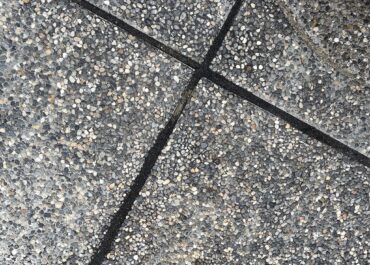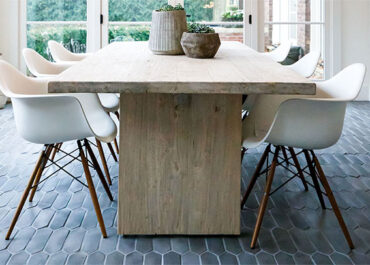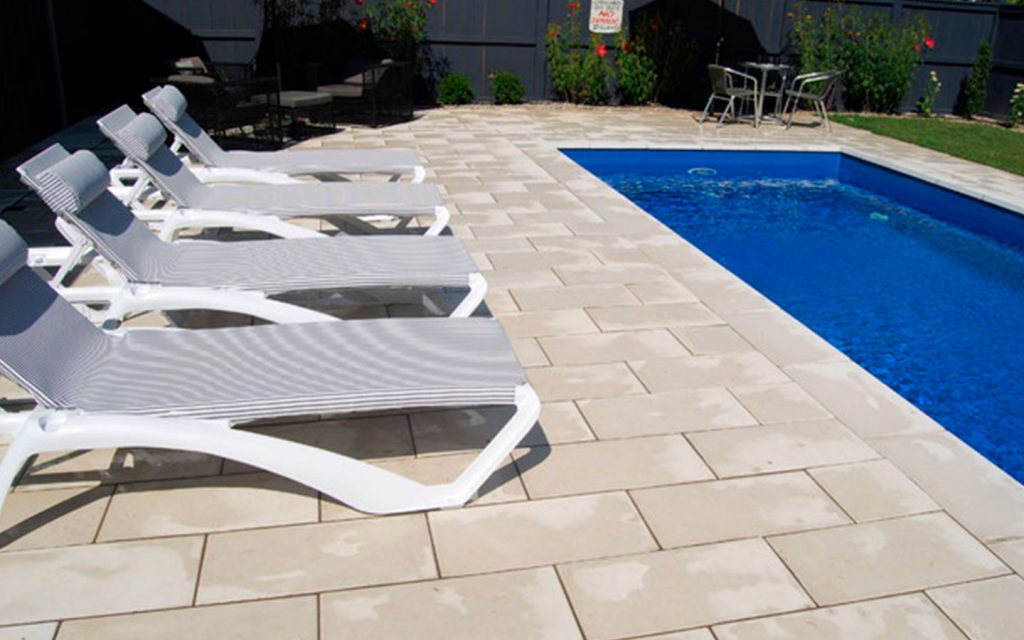
Pool coping pavers are specialized paving stones designed to cap the edge or perimeter of a swimming pool, serving both functional and aesthetic purposes in the long run. Regardless of material, these products can also cover the top edge of a fiberglass structure, creating a finished and protective barrier to keep out debris, prevent water from seeping into the foundation, and provide a non-slippery surface around it. As a design enthusiast, you may have wondered at one point or another how to install paver coping on a fiberglass pool of your own.
If so, this article is for you. Today, you’ll learn the basic steps in tackling this task from a DIY approach – as well as a deep insight into the design choices available out there.
Read our complete guide on coping pavers for pools by clicking here.
How to install paver coping on a fiberglass pool: before you begin
As you may know, fiberglass pools typically have a lip around their perimeter where the pool shell meets the surrounding decking or patio area. In this case, paver coping is installed over this lip to provide a finished edge, thus enhancing the aesthetics and functionality of the pool area as a whole. If that is a common spot for your family and friends to gather, you might consider planning a nice and long-lasting project.
However, a long-lasting project depends on a few pivotal factors that, as a beginner, you haven’t mastered yet. We’re talking about hand skills and technical knowledge that only hardscape experts muster – and as experts ourselves, we can guarantee that going for professional guidance is the best course of action.
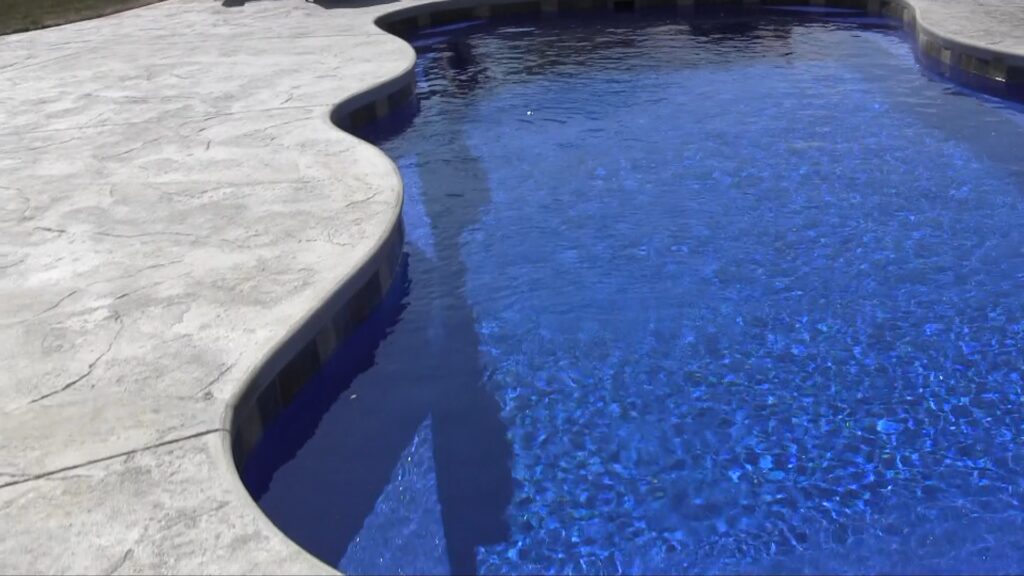
For starters, take a look at the tools and supplies needed for the job (besides a pallet of pavers of your choice, of course):
- Measuring tape or ruler: For measuring the dimensions of the pool perimeter and coping stones.
- Chalk line or string: To mark guidelines for accurate alignment of coping stones.
- Level: To ensure the coping stones are installed evenly and horizontally.
- Rubber mallet: For tapping the coping stones into place without damaging them.
- Masonry saw or wet saw: For cutting coping stones to fit around curves or angles.
- Trowel: For applying adhesive or mortar to secure the coping stones.
- Grout float: For applying grout between coping stones (if applicable).
- Adhesive or mortar: To secure the coping stones to the pool lip. Make sure to use a product suitable for outdoor applications and compatible with both the coping material and the pool surface.
- Grout (if applicable): To fill the joints between coping stones for added stability and aesthetics.
- Backer rod or foam filler (if applicable): For filling expansion joints or gaps between the coping stones and the pool deck.
- Joint sand: For filling gaps between coping stones and providing additional stability.
Also, depending on the specific requirements of your installation and the condition of your pool area, you may need other supplies such as landscape fabric, gravel, or compacting equipment to prepare the base for the coping stones.
Don’t miss: Paving Prices in 2024 – A Hardscape Guide
How to install paver coping on a fiberglass pool: full tutorial
Many things to account for, right? We know!
If you still decide to go for it, that’s fine. As long as you follow our next tutorial, installing your dream pavers on your fiberglass pool can be rewarding. Just make sure to call for help when it’s necessary – and prepare the groundwork in favorable seasons.
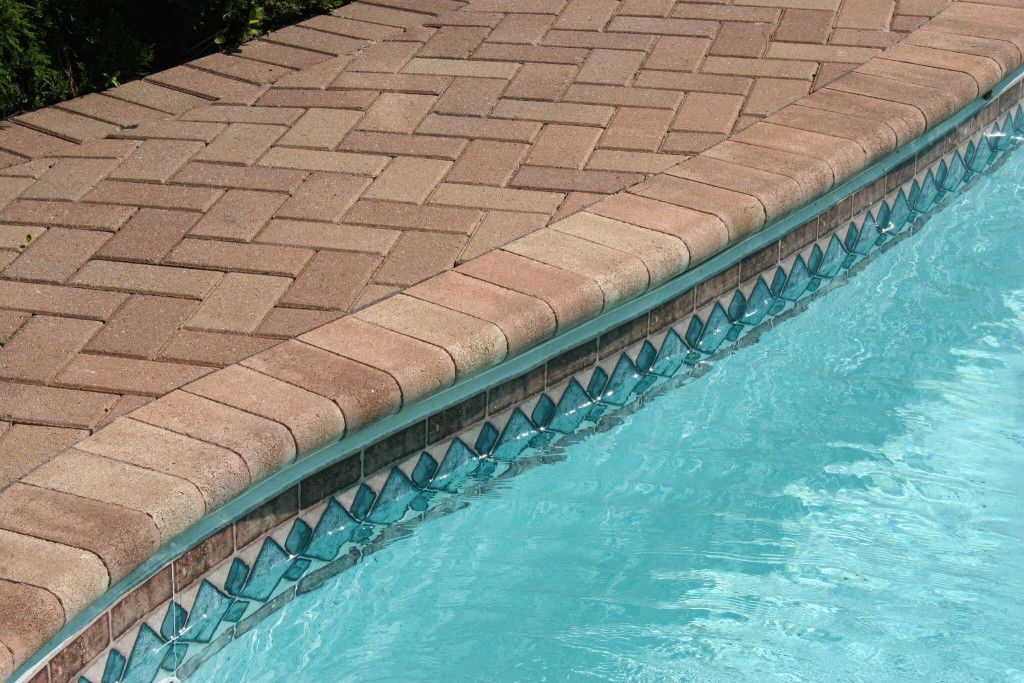
That said, once you have gathered all the supplies from our list, follow the steps below:
1. Prepare the Pool Area
- Clean the pool lip thoroughly to remove any dirt, debris, or residues that could interfere with adhesion.
- If necessary, repair any damaged areas of the pool lip and ensure it is smooth and free from protrusions.
2. Plan the Layout
- Measure the perimeter of the pool to determine the quantity of coping stones needed.
- Lay out the coping stones around the pool perimeter to ensure proper alignment and fit. Use chalk lines or strings to mark guidelines for accurate placement.
3. Cutting Coping Stones (if necessary)
- Use a masonry saw or wet saw to cut coping stones to fit around curves, angles, or other obstacles in the pool area.
- Wear appropriate safety gear, including eye protection and a dust mask, when cutting coping stones. Learn how to cut pavers by clicking here.
4. Apply Adhesive or Mortar
- Apply a generous amount of adhesive or mortar to the back of each coping stone using a trowel.
- Make sure the adhesive or mortar is evenly distributed to ensure proper bonding.
5. Install Coping Stones
- Carefully place each coping stone onto the pool lip, pressing firmly to ensure good adhesion.
- Use a rubber mallet to gently tap each coping stone into place, ensuring it is level and aligned with adjacent stones.
6. Check for Level and Alignment
- Use a level to verify that the coping stones are installed evenly and horizontally.
- Make any necessary adjustments to ensure a professional-looking finish.
7. Fill Joints (if applicable)
- If using grout, apply it between the coping stones using a grout float, making sure to fill all joints.
- Smooth the surface of the grout with the float and wipe away any excess grout with a damp sponge.
8. Allow for Cure Time
- Allow the adhesive, mortar, or grout to cure according to manufacturer guidelines before allowing any foot traffic or water exposure.
9. Finishing Touches
- Once the coping is fully installed and cured, clean the pool area to remove any construction debris or residues.
- Seal the coping stones (if recommended by the manufacturer) to protect them from stains, moisture, and UV damage.
The most popular paver coping options for fiberglass pools
Coping pavers come in a variety of materials, allowing for a plethora of matching colors, shapes, and textures. Bullnose pavers, for instance, are a very traditional type of coping – featuring a smoothly finished edge on one or more sides and creating a gentle and continuous curve. Read all about the bullnose pattern in this other article.
At the end of the day, that means you can choose a style that complements the overall design of your fiberglass pool with ease. Just keep in mind that the choice of coping material can significantly impact the visual appeal of your project in the long run, especially among potential buyers of your house, as well as its initial cost.
It’s essential to choose materials that are specifically designed for outdoor use and are compatible with the pool’s construction. Below, we’ve listed the 4 main types of paver coping for a fiberglass pool so you get to know a little more about your options.
Concrete pavers

Available in various styles, colors, and finishes, concrete paver coping offers ease of installation, cost-effectiveness, and low maintenance while providing long-lasting performance and aesthetic appeal. Its uniform size and shape allow for precise alignment and placement, making it a popular choice for both residential and commercial landscaping projects, where it enhances the functionality and beauty of outdoor living spaces with minimal effort.
Expect to spend between $40 and $50 per linear foot with concrete coping.
Travertine pavers
Travertine paver coping is a premium option for creating elegant and sophisticated edges around outdoor structures. Crafted from natural travertine stone, this coping material offers timeless beauty with its unique textures, colors, and patterns.
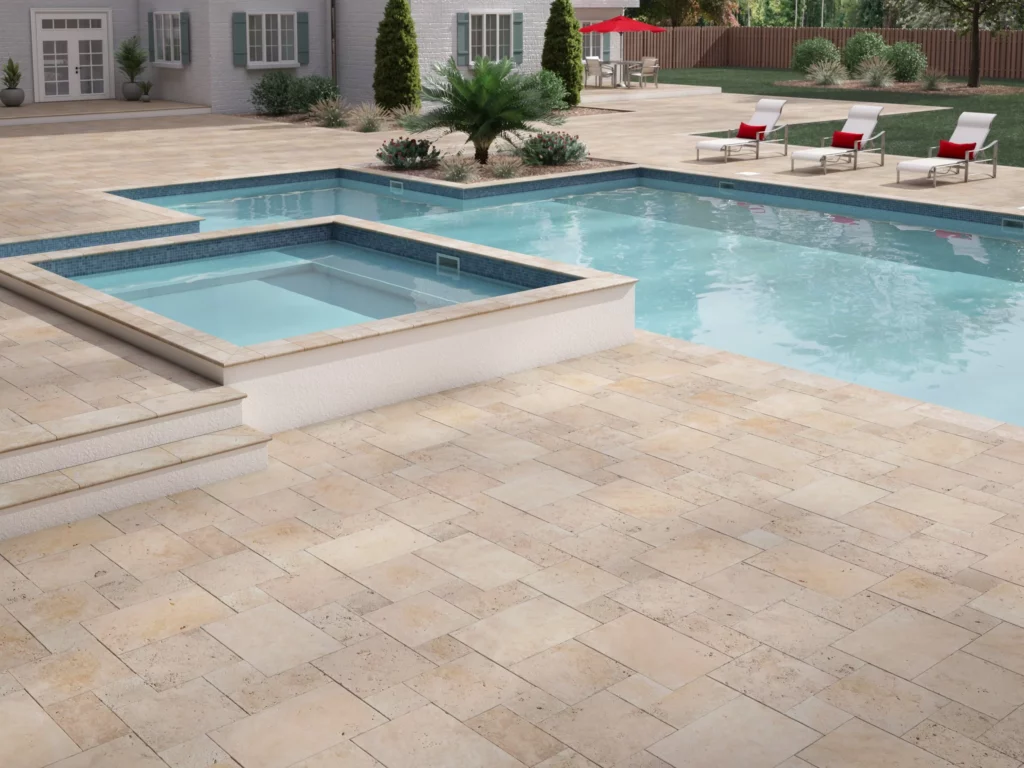
Travertine is prized for its durability and resistance to extreme weather conditions, making it suitable for long-term outdoor use. With its luxurious appearance and versatility, it elevates the aesthetics of any landscape while providing a functional and low-maintenance solution. Though it may require professional installation due to its natural variation in thickness and irregular shapes, travertine coping offers unmatched beauty and sophistication, making it a favored choice for high-end residential and commercial projects seeking to create a refined outdoor ambiance.
Expect to spend about $45-$55 per linear foot with travertine coping.
Bluestone pavers
Similarly to travertine, bluestone is a premium choice for adding a touch of natural elegance to outdoor structures, particularly fiberglass pools. Crafted from durable bluestone, a type of sandstone renowned for its rich blue-gray hues, this coping material exudes timeless beauty and sophistication.
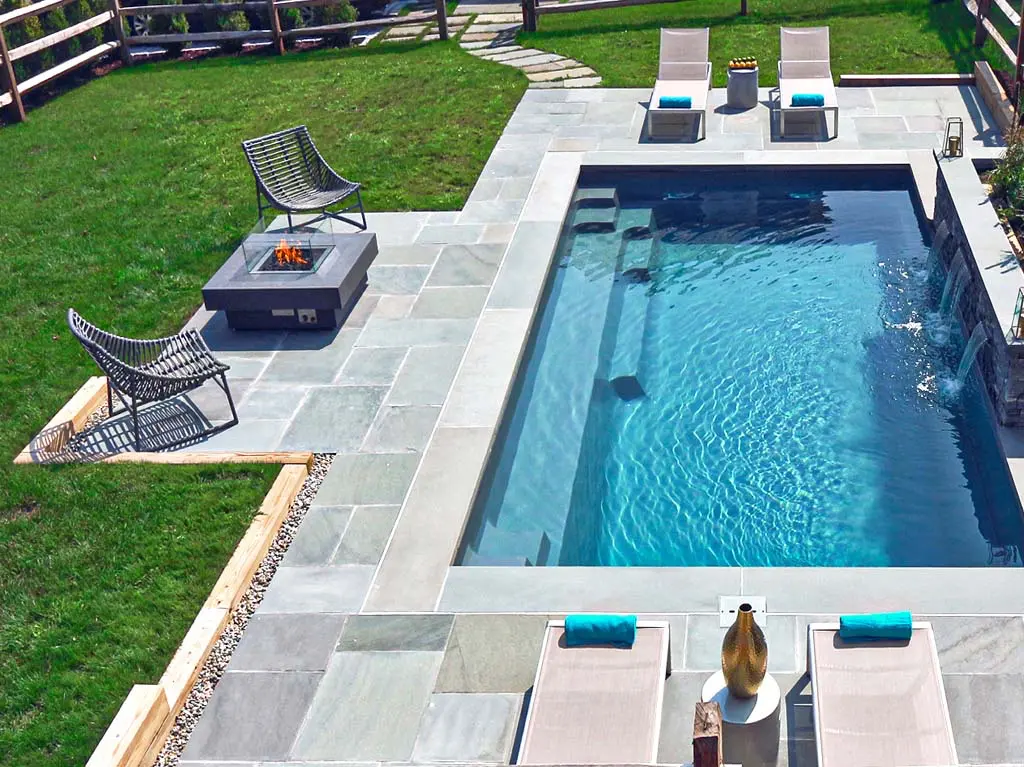
Bluestone coping offers versatility in design, with various shapes and sizes available to suit different project requirements – its natural texture and color variations add character and charm to any landscape. With excellent durability and resistance to weathering, bluestone paver coping is well-suited for outdoor use, providing long-lasting performance and aesthetic appeal. While professional installation may be required due to its irregular shapes and thicknesses, bluestone coping delivers a luxurious and refined finish.
Expect to spend about $45-$55 per linear foot with bluestone coping.
Porcelain pavers
This type of coping represents a modern and sleek option crafted from high-quality porcelain, offering a versatile blend of durability, aesthetic appeal, and low maintenance. Porcelain coping is available in a wide range of colors, finishes, and sizes to complement various design styles, from minimalist to transitional.
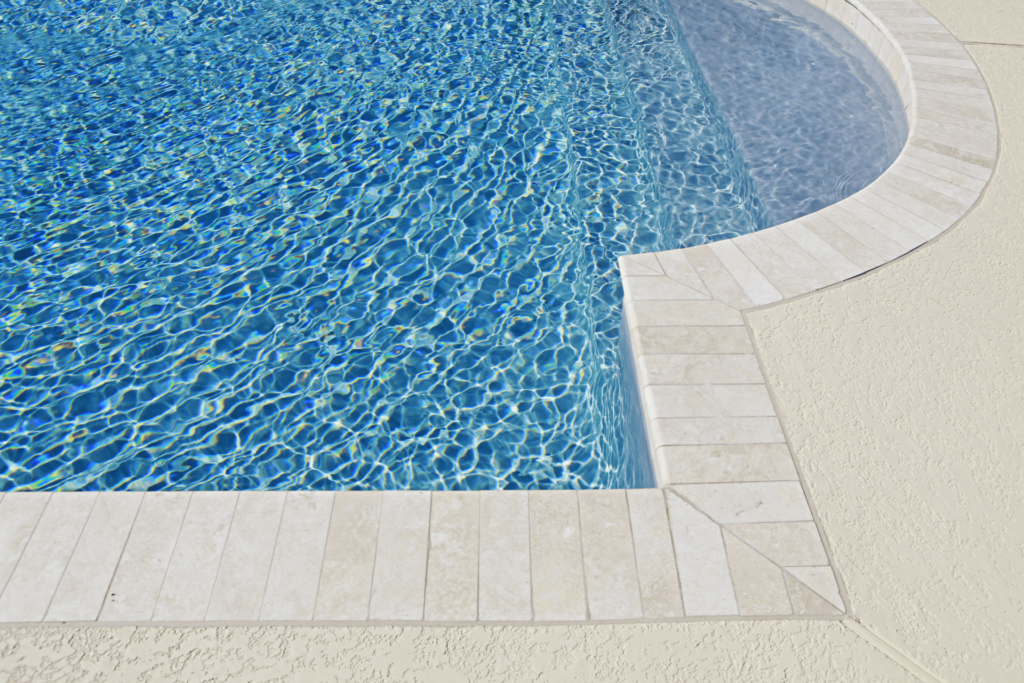
With its uniformity in thickness and precise edges, porcelain paver coping allows for straightforward installation, reducing labor costs and ensuring a seamless finish. Its resistance to fading, staining, and weathering makes it well-suited for long-term outdoor use, while its smooth surface is easy to clean and maintain. Like other non-porous stones on this list such as travertine and bluestone, porcelain doesn’t need to be sealed!
Expect to spend about $20-$50 per square foot with porcelain coping.
When to use pool coping pavers
Although coping is not an absolute must for every fiberglass pool, it is highly recommended for the many important reasons we’ve seen throughout the article. That said, there may be some situations where it could be nobly omitted.
For instance, in more naturalistic pool designs – such as natural swimming pools or ponds – coping may not be used, valuing a seamless transition between the water and the surrounding environment above all. Additionally, some outdoor designs with specific architectural features may opt for alternative edge treatments instead.
Whether or not to include coping in your fiberglass pool depends on your design preferences, budget, overall aesthetic, and functional goals for your backyard. If you decide to omit paver coping, it’s essential to work with a qualified pool builder or designer to ensure that the pool’s edge is properly constructed, remodeled, and protected to maintain structural integrity and safety.
And speaking of qualified experts…
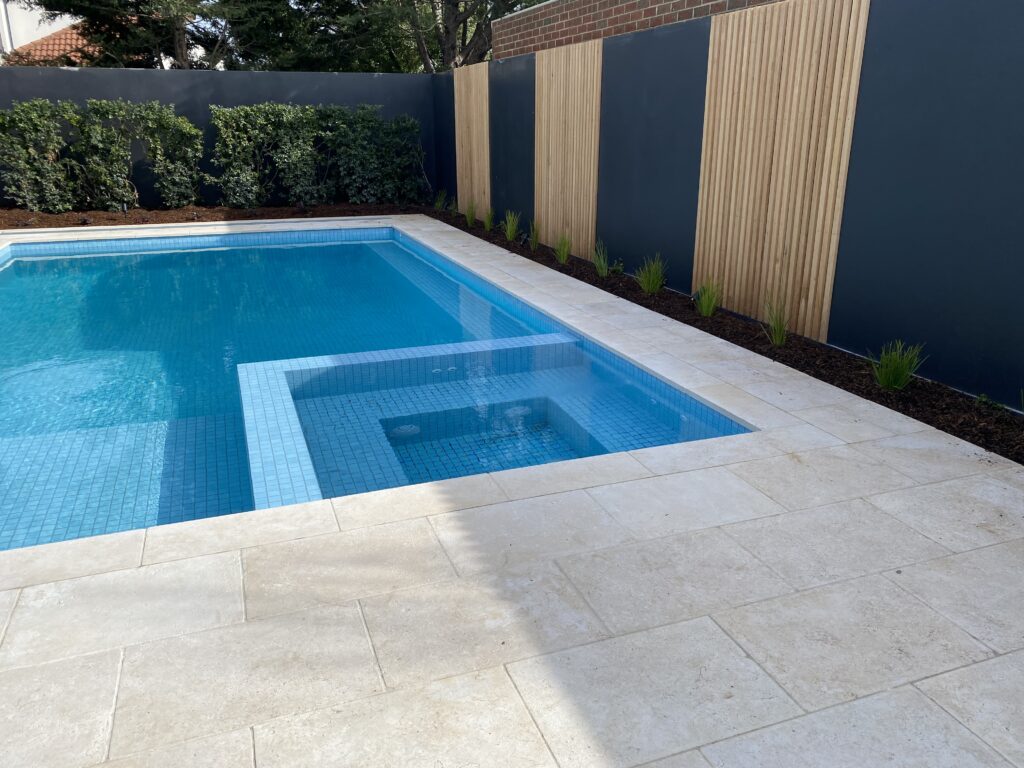
Purchase the best coping pavers at Eagle Pavers!
Now that you know how to install paver coping on a fiberglass pool, maybe you’re convinced that the task at hand is best left to hardscape experts. At the end of the day, they carry all the necessary equipment and the right techniques to make your dream pool into reality without fuss.
As a branch of Eagle Stones, our hardscape professionals are ready to help you with anything. We’ve been serving the city of Sarasota and all its surrounding counties for years now – and not only do our clients receive high-quality products from a vast catalog but they see firsthand their dream project come true with the best installation services in town.
So don’t hesitate to contact our crew today! We’ll be waiting for you.


